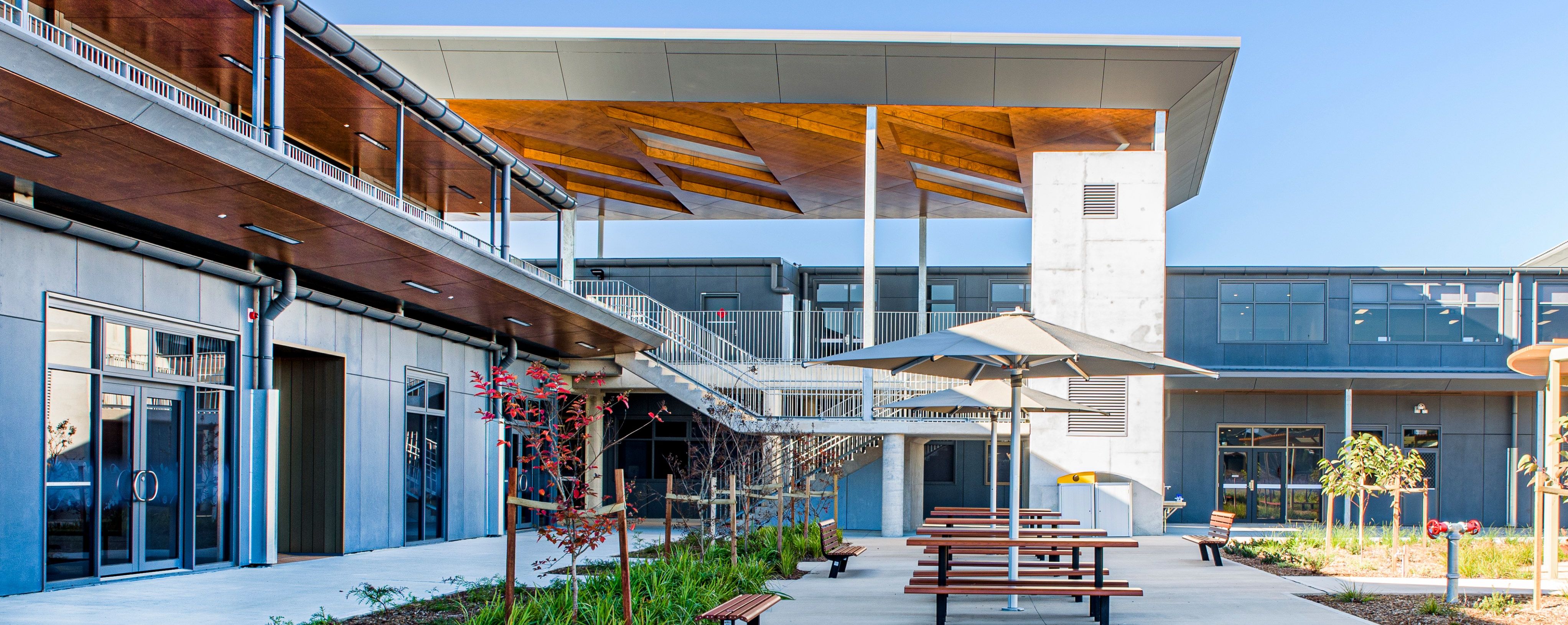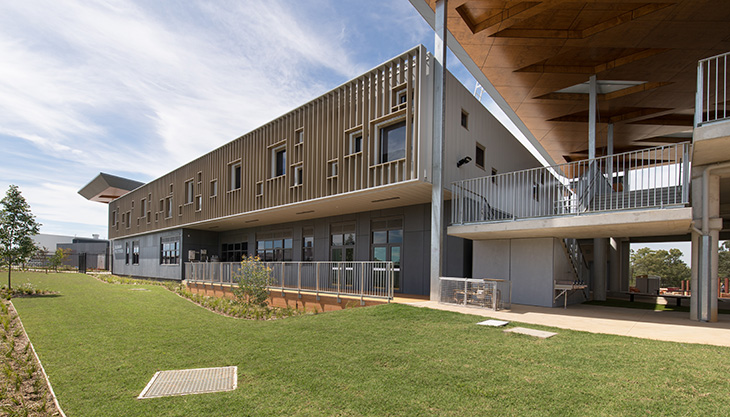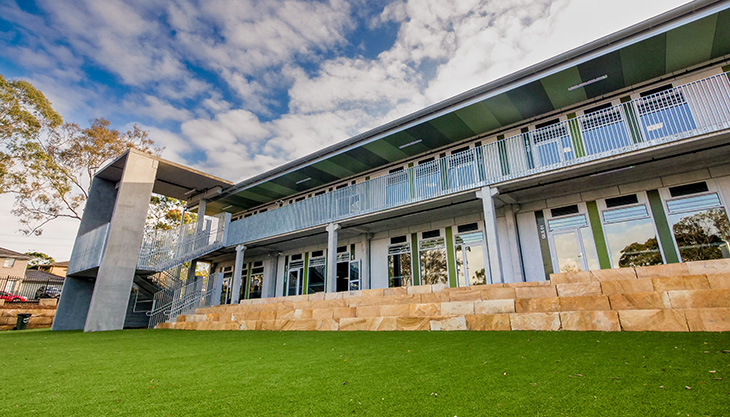Designing and building schools for growing communities

Our aim is to accelerate the delivery of high quality, equitable and sustainable public education infrastructure to meet the educational needs of rapidly growing areas across NSW. To achieve this, we:
- Encourage industry partners to adopt best practice from both traditional and modern methods of construction when designing and building public schools in NSW.
- Broaden industry participation to enable a wide range of businesses, including Aboriginal owned and those in regional areas to work with us.
- Spearhead innovations like the School Infrastructure Pattern Book that offers our construction partners compliant and repeatable school designs and components to help drive efficiencies, deliver value for money and ensure equitable facilities across NSW.
- Enhance transparency and collaboration by publishing our Major Projects Tender Pipeline to attract investment and early engagement, and ensure the wider industry is informed about how to work with us.
- Capitalise on innovative technologies, drive productivity, grow skills and lift outcomes across the supply chain through meaningful pathways, partnership and development programs.
Creating greater equity for our students
To keep up with changing ways of learning and the need to build schools quickly in fast-growing areas of NSW, we’ve adopted forward-thinking “standardised designs”. These designs make sure we can expand our schools in the future, in line with demographic needs and growth, and support a range of learning modes and activities
Standardised designs consist of a range of building types, internal spatial plans and layouts which are able to be arranged to suit various sites, school types and sizes. These proven and tested designs and floor plans help reduce unnecessary complexity, lead to better value for public money and provide every new school and existing school upgrade, regardless of its location, the same high-quality facilities and learning environments.
The School Infrastructure Pattern Book sets new benchmarks for major projects and is a comprehensive resource for construction partners to use when designing and building public schools in NSW.
The goals of the Pattern Book are to ensure an equitable standard of public education infrastructure which represents value for money and reductions in both time and cost whilst improving the quality of the building through repetition. The Pattern Book ensures we deliver modern, uniformed public school infrastructure across NSW communities that meet the unique operational and educational needs of the school now and for the future. It is also the basis for which the construction industries can improve productivity, on site safety, and enable growth in NSW manufacturing sector.
Benefits of our Pattern Book approach and Modern Methods of Construction
There are many benefits to adopting design standardisation and modern construction methods:
- We save time – depending on the project and the construction method, we can save time on site . The use of the Pattern Book also allows for savings in design timeframes and allows industry to better understand and plan for our pipeline.
- Manufacturing in a controlled factory environment can reduce the impact of adverse weather and site conditions on the total build time.
- There can be great sustainability gains, including reduced carbon emissions, material waste and water waste on sites.
- We are making a social impact, creating new jobs, expanding opportunities for local training and upskilling and harnessing inherent productivity and safety gains to improve working conditions in the construction industry.
- It’s safer to manufacture building parts in purpose-built spaces and the assembly requires less interface on sites.
- It provides equality of building and delivery time between rural, regional and metropolitan schools.
Given students are at the centre of all we do, we aim to reduce disruption to school operations wherever possible. Offsite manufacturing and onsite assembly can assist as it means less noise, dust, traffic and disruption.
Modern Methods of Construction explained
Modern Methods of Construction (MMC) encompass a variety of innovative building techniques designed to enhance efficiency, quality, and sustainability in the construction industry. These methods often involve off-site manufacturing and on-site assembly, leading to faster build times and reduced environmental impact.
Key MMC techniques
Hybrid approaches
Volumetric modules
Kit of parts
Hybrid projects
The following projects were delivered using traditional construction but also had significant elements that were manufactured off site, including wall panels, air-conditioning systems and ventilation stacks.
Our learning spaces

Image:
Galungara Public School two-storey classroom building

Image:
Ryde Secondary College two-storey classroom building and playground

